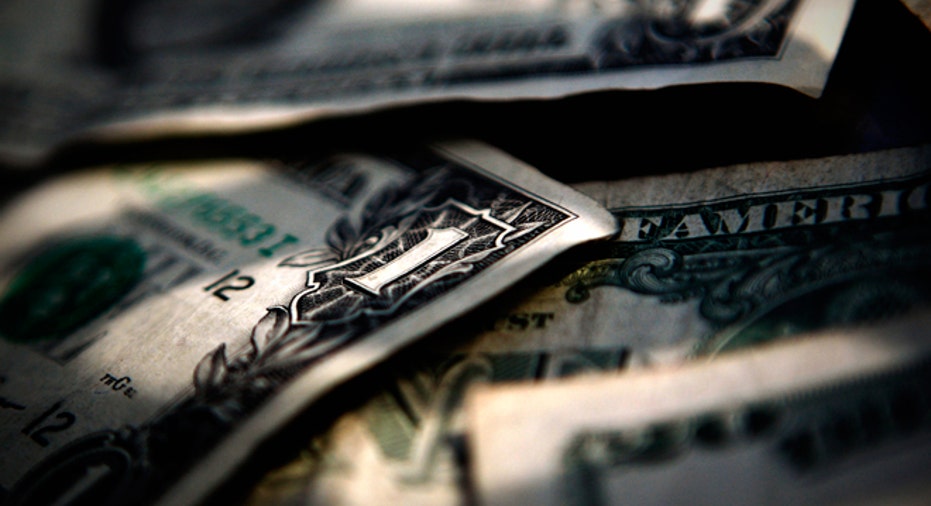Deal Allows U.S. to Dodge Downgrade Bullet -- For Now

Congressional leaders have finally clinched a deal to reopen the government and raise the debt ceiling -- and it’s a good thing because another fiscal fumble by Washington could have provoked a damaging credit-rating downgrade.
Credit-ratings firms have taken a hit for dropping the ball ahead of the ’08 crisis, but they still retain enormous sway in the financial world because their ratings are hardwired into the system.
Couple that with the fact that U.S. debt is used as a pivotal yardstick in the global economy, and it’s easy to see how a downgrade could set off ripple effects and further tarnish America’s reputation as the world’s safest developed economy.
Potential outcomes of a downgrade include dumping of Treasury bonds, hastening the demise of the U.S. dollar and further slowing lackluster economic and job growth.
“The U.S. Treasury is the benchmark against which all other securities are measured. If that benchmark is questioned, we live in a different world suddenly,” said Jan Randolph, director of sovereign risk at IHS Global Insight. “It’s almost like a movement in the axis of the Earth. It’s that kind of impact.”
For now, the last-minute compromise struck by Washington on Wednesday should remove the near-term threat of a downgrade. Treasury warned it risked a default if no deal to raise the debt ceiling was reached by midnight on Thursday.
“Whether we like it or not, large parts of the financial system are still hardwired into these ratings."
“I don’t think a downgrade is imminent assuming we don’t have any default on Treasury instruments,” said Russ Koesterich, global chief investment strategist at BlackRock (NYSE:BLK), the world’s largest bond fund which manages $1.25 trillion in long-term bond assets.
“It’s a long-term concern. There is no law of physics that guarantees the U.S. dollar will be the world’s reserve currency for all-time and the Treasury will always be the world’s safe haven,” he said.
Fitch Fires Warning Shot
The U.S. is one of the only major economies in the world to sport a perfect AAA credit rating, which is like a report card for investors detailing an issuer’s creditworthiness.
Standard & Poor’s took the unprecedented step of downgrading the U.S. in 2011 during the last debt-ceiling fight, leaving Fitch and Moody’s as the only major credit-ratings firms with a AAA rating on the U.S.
Fitch put the U.S. on watch for a downgrade on Tuesday, warning the “repeated brinkmanship” in Washington “dents confidence in the effectiveness of the U.S. government and political institutions, and in the coherence and credibility of economic policy.”
A downgrade by Fitch would mean that under the laws and regulations of some countries and institutions, Treasurys would no longer be considered risk-free assets.
That’s because large parts of the financial world, especially ultra-conservative investors like pension and insurance funds, still rely on these ratings for investment decisions, even though they are credit opinions that are not always accurate (see: pre-2007 CDO ratings).
“Whether we like it or not, large parts of the financial system are still hardwired into these ratings,” said Randolph.
Gold Standard Status at Risk
If Treasurys are no longer seen as risk-free assets, “you could have hundreds of billions of dollars of Treasurys dumped on the market. That’s a serious consequence,” said Robert Shapiro, a senior policy scholar for the Georgetown Center for Business and Public Policy.
The dumping of Treasurys would drive up their yields, increasing the cost of credit around the world, including the cost to finance the U.S.’s own massive debt load.
According to Shapiro’s estimates, a one percentage-point increase on Treasury yields for one decade would cost $1 trillion, or roughly the savings generated by the sequester.
He said a one percentage-point rise on Treasury yields would cause $300 billion in reduced demand from higher interest rates and lower investment, equaling about 2.5 million to 3 million jobs and 2% of gross domestic product.
“In the world of financial products, the gold standard is often taken to be U.S. Treasury and German government debt,” said Randolph. “If these lakes are suddenly murky and less secure…it basically throws the system off its anchor.”
Others believe another downgrade would have little effect on financial markets.
“Remember the S&P downgrade? There was the specter of significantly higher yields strangling the fledgling recovery. In contrast to the political bluster, yields went down, not up,” said Cam Harvey, a professor at Duke University. “The U.S., even with all of its problems, is still the safest large market to invest in.”
Dollar on the Defensive
But that doesn’t mean its reputation hasn’t been at least dinged by the constant stream of manufactured crises out of Washington. Another downgrade could do even more damage to that reputation.
“The political dysfunction imposes new risks on investing and lending to the United States,” said Shapiro. “No one voluntarily defaults on its debt unless they are crazy or self-destructive. The costs are enormous.”
These reputational concerns trickle down to the role of the U.S. dollar, which enjoys the vaunted status of being the world’s go-to currency.
This status helps make the U.S. the world’s strongest and most dynamic developed economy, even after the ’08 crisis.
“It’s not good if this ‘gold standard’ is subject to these questions because it does make alternative currencies more palatable,” said Randolph.
It’s true that right now the greenback enjoys an unrivaled position due to the depth and stability of the U.S. dollar market.
But that may not always be the case. Eventually, China, the biggest holder of U.S. debt, could be encouraged to allow its currency to be convertible. U.S. struggles could open up room for alternatives, such as the euro.
“Long term, it’s something we have to guard against. We can’t take it for granted,” said Koesterich.



















